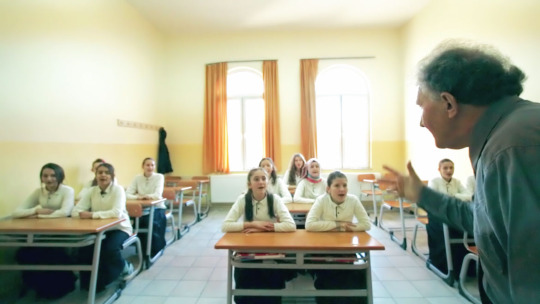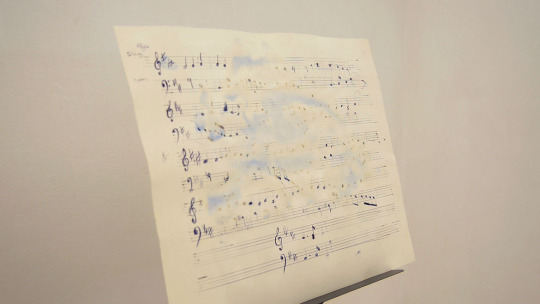#ramijon pronja
Text
Studio Visit: Remijon Pronja
Albanian artist Remijon Pronja’s early work explores what it means to survive as an artist in precarious economic times. Il vuoto nello spazio² is a series of drawing he created during his time as a student in Milan. The collection includes sketches alongside hand-scrawled lists of numbers: rent, tuition fees, and calculations of household expenses are juxtaposed next to the hours of work needed to pay everything off. Similarly, in Fibonacci Receipt, Pronja prints a catalogue of receipts that reflects the cost of making the piece itself. Much like the Fibonacci sequence, the value of the book progresses with every page printed.

More recently, Pronja has turned towards exploring a different notion of precarity: that of European identity. Two video installation pieces— “Untitled in Allegro Moderato” (2015) and “An Die Freude (Nushid AlFarah – نشيد الفرح)” (2016)—revolve around Ludwig van Beethoven’s Ninth Symphony, based on Friedrich Schiller’s late 18th century poem “Ode to Joy.” In “An Die Freude,” female pupils in one of Albania’s Madrasa religious schools sing the “Ode” in Arabic. As protagonists of the piece, the pupils as creating something entirely new. The Arabic version of the song, while retaining a notion of European “tradition,” also uniquely reflects the position of Albania as one of Europe’s only constitutionally secular, Muslim-majority countries. In “Untitled in Allegro Moderato,” Pronja scrambles the notes of “Ode to Joy” by drawing a map of the EU on the sheet music using water, thus altering the musical score, and with it, the concept of a unified expression of European identity.

As theorist Slavoj Žižek argues, while the Ode is generally taken for granted as a grand symbol of humanity, brotherhood, and freedom for all, it contains a darker undertone within it. It has variously been adopted by the Nazis, the Soviet Union, the extreme right in apartheid South Rhodesia, and the extreme left of the violent Shining Path of Peru. Through his video work, Pronja seems to suggest that the idea of a united and homogenous Europe is as much as a myth as that of the “perverse scene of universal fraternity” claimed by the Ode to Joy, and a dangerous myth at that.
#ode to joy#ramijon pronja#residency unlimited#art residency#europe#european union#immigration#islam#arabic#beethoven#art#artist#albania#albanian art
0 notes